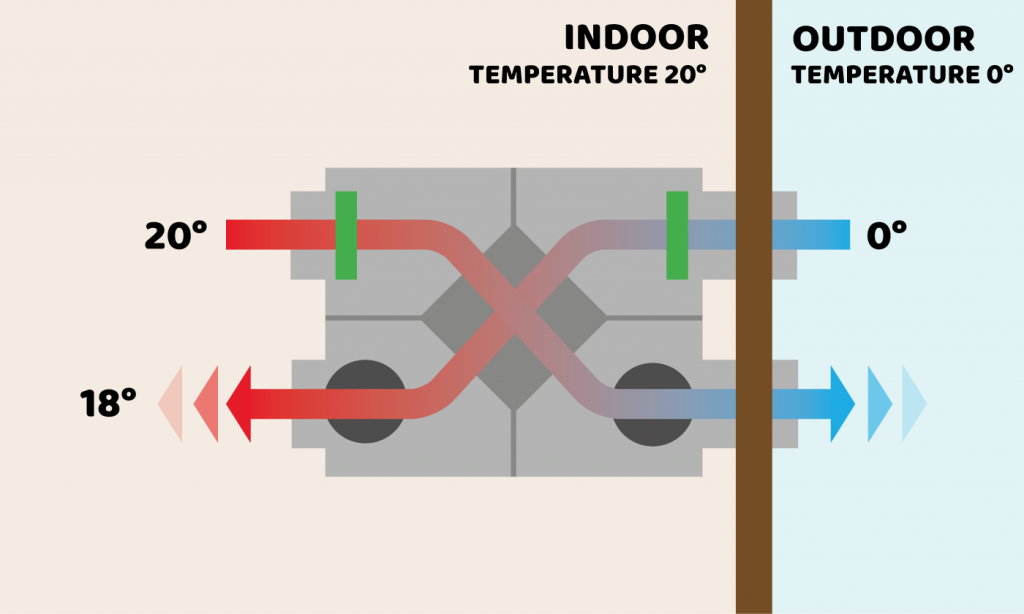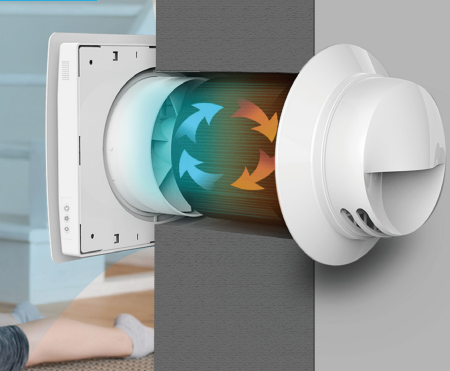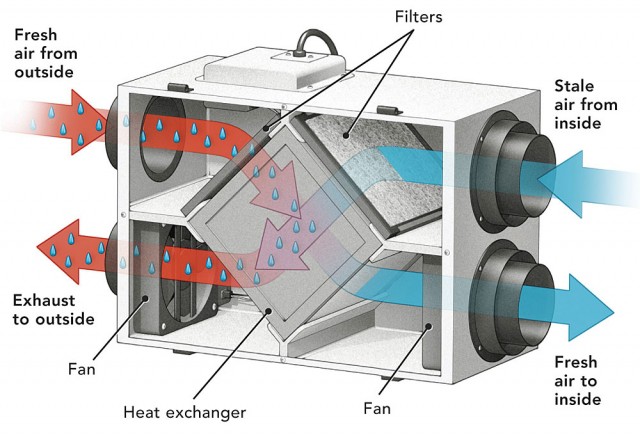7 Signs You Could Benefit From HRV in Your Home
Wiki Article
Checking out the Conveniences of Heat Recovery Ventilation for Energy Effectiveness in Residences
Heat Recovery Ventilation (HRV) systems supply property owners a functional method to improving energy effectiveness. By reclaiming heat from outward bound air, these systems can substantially lower heating & cooling prices. In addition, they supply a steady supply of fresh air, boosting interior air high quality and convenience levels. As homeowners think about lasting options, recognizing the subtleties of HRV systems ends up being significantly essential. What factors should one examine prior to making such a financial investment?Comprehending Heat Recovery Ventilation Equipments

Just How HRV Improves Indoor Air Top Quality

Power Cost Savings: The Financial Advantages of HRV
Making the most of energy efficiency, heat recovery ventilation (HRV) systems offer substantial economic benefits for homeowners. By recovering and recycling warm from exhaust air, HRVs noticeably reduce go to my blog heating & cooling prices. This modern technology can lead to power financial savings of as much as 30%, depending on climate and use patterns. Homeowners frequently discover minimized utility costs soon after setup, making HRVs a financially sensible investment in time. Furthermore, numerous areas supply motivations or rebates for energy-efficient upgrades, further improving the financial appeal. As power rates continue to increase, the cost-effectiveness of HRVs ends up being increasingly clear. On the whole, the consolidation of HRV systems not only promotes energy performance yet likewise contributes to long-lasting monetary cost savings for households.The Environmental Influence of Heat Recovery Ventilation
A considerable environmental benefit of heat recovery ventilation (HRV) systems depends on their capability to decrease general power consumption. By reclaiming warmth from exhaust air and transferring it to incoming fresh air, HRV systems decrease the requirement for energy-intensive heating and cooling techniques. This decrease in energy demand contributes to reduce greenhouse gas discharges, as less nonrenewable fuel source is required to preserve comfortable indoor temperature levels. In addition, HRV systems enhance interior air high quality by successfully exchanging stale air with fresh exterior air, minimizing reliance on mechanical air conditioning systems that can hurt the setting. Generally, the implementation of HRV systems sustains sustainable living methods and lines up with international initiatives to fight climate modification by advertising energy efficiency in household settings.
Choosing the Right HRV System for Your Home
Exactly how can homeowners guarantee they select the appropriate heat recovery ventilation (HRV) system for their needs? They need to examine their home's dimension and layout, as these aspects affect air movement needs. Next off, reviewing the system's performance rankings Check Out Your URL is essential, as greater ratings suggest much better efficiency and power cost savings. House owners should additionally think about installation and maintenance expenses, comparing various brands and designs for worth. Additionally, it is necessary to review noise degrees, as some systems run more quietly than others. Consulting with heating and cooling professionals can offer tailored recommendations based upon certain home conditions. Lastly, checking out individual testimonials and guarantees can assist in making an informed choice, making certain that the picked HRV system successfully enhances interior air quality and energy performance.Regularly Asked Inquiries

Just how Often Should I Clean or Maintain My HRV System?
The frequency of cleaning or preserving a heat recuperation air flow (HRV) system typically relies on usage and ecological aspects. Normally, it is advisable to perform maintenance every six months to ensure peak efficiency and air high quality.
Can HRV Systems Assist Lower Humidity Degrees Inside?
HRV systems can properly minimize interior moisture degrees by trading stagnant, humid air with fresh, drier air from outdoors. HRV Heat Recovery Ventilation. This procedure aids preserve a well balanced indoor atmosphere, improving convenience and stopping moisture-related problems
What Is the Life expectancy of a Normal HRV System?
The life-span of a regular heat recovery ventilation (HRV) system differs, usually lasting in between 10 to 15 years. Normal maintenance can extend its performance and operational life, making sure peak efficiency throughout its usage try this out period.Exist Any Noise Interest In HRV Equipments?
Sound interest in HRV systems can develop, particularly from follower operation. Many contemporary devices are developed to decrease audio degrees, ensuring they run silently while maintaining efficiency, which attends to potential disturbances in living settings.Can I Install an HRV System Myself, or Do I Need an Expert?
The specific contemplated whether to mount the heat recovery ventilation (HRV) system personally or work with a specialist. Generally, while do it yourself installation is possible, know-how guarantees proper functionality and conformity with regional building codes, boosting system effectiveness.Report this wiki page